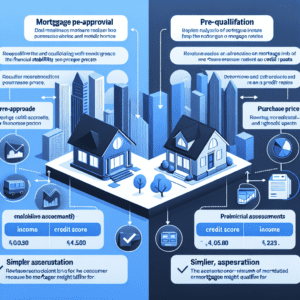“Unclaimed Cash Awaits – See If You Qualify for a Class Action Payout!”
Unclaimed Settlements: How to Check If You’re Owed Money
Many consumers may not realize that they are entitled to compensation from class action settlements. When companies engage in deceptive practices, violate consumer rights, or fail to meet legal obligations, they may be required to compensate affected individuals through legal settlements. However, a significant portion of these funds often goes unclaimed simply because people are unaware that they qualify. Understanding how to check for unclaimed settlements and claim your rightful share can ensure that you receive any money owed to you.
One of the most effective ways to determine if you are eligible for a class action payout is by visiting official settlement websites. These platforms provide comprehensive lists of ongoing and finalized settlements, along with eligibility criteria and claim submission deadlines. Websites such as the Federal Trade Commission (FTC) and the U.S. Department of Justice also offer resources to help consumers identify potential claims. Additionally, third-party websites dedicated to tracking class action settlements can be valuable tools for staying informed about available compensation.
To check if you qualify for a settlement, you will typically need to review the details of each case. Settlements often involve specific groups of consumers who purchased a product, used a service, or were affected by a company’s actions within a certain time frame. If you meet the criteria, you may be required to provide proof of purchase, account details, or other relevant documentation. However, some settlements do not require proof, making it easier for eligible individuals to submit claims.
Filing a claim is usually a straightforward process. Most settlement websites provide online claim forms that guide you through the necessary steps. You may need to enter basic personal information, describe your eligibility, and submit any required documentation. It is important to ensure that all information is accurate and complete, as errors or missing details could result in a rejected claim. Additionally, keeping track of submission deadlines is crucial, as late claims are typically not accepted.
Once a claim is submitted, the processing time can vary depending on the complexity of the settlement and the number of claims received. Some payouts are distributed within a few months, while others may take longer due to legal proceedings or administrative delays. Settlement funds are often distributed via checks, direct deposits, or prepaid cards, depending on the terms of the agreement. If you have submitted a claim, regularly checking the settlement website or your email for updates can help you stay informed about the status of your payment.
It is also important to be cautious of scams related to class action settlements. Fraudulent websites and emails may attempt to collect personal information by posing as legitimate settlement administrators. To protect yourself, always verify the authenticity of a settlement by checking official sources and avoiding unsolicited requests for sensitive information. Legitimate settlements do not require upfront payments or personal banking details beyond what is necessary for claim processing.
By taking the time to check for unclaimed settlements, you can ensure that you receive any compensation you are entitled to. Many consumers miss out on these opportunities simply because they are unaware of their eligibility. Staying informed, regularly reviewing settlement lists, and submitting claims promptly can help you recover money that rightfully belongs to you.
Class Action Lawsuits: Who Qualifies for Compensation?

Class action lawsuits provide a way for individuals to seek compensation when they have been harmed by a company’s actions, whether through defective products, false advertising, data breaches, or other forms of misconduct. These lawsuits consolidate similar claims into a single case, allowing affected individuals to pursue justice without the burden of filing separate lawsuits. If you have ever purchased a product, used a service, or been affected by a company’s negligence, you may be eligible for compensation through a class action settlement. However, determining whether you qualify requires an understanding of the criteria set forth in each case.
To begin with, class action lawsuits typically involve a group of plaintiffs who have experienced similar harm. The lawsuit is filed on behalf of all affected individuals, known as the “class,” and is led by one or more representatives. Once a settlement is reached or a court ruling is made, eligible individuals can submit claims to receive compensation. The eligibility criteria vary depending on the nature of the lawsuit, but they generally include factors such as proof of purchase, documentation of harm, or evidence of being affected by the defendant’s actions. In some cases, individuals may automatically be included in the settlement if they meet the specified criteria, while in others, they may need to opt in by submitting a claim form.
One of the most common types of class action lawsuits involves consumer products. Companies that manufacture or sell defective products, misrepresent their goods, or fail to disclose important information may face legal action. For example, if a company falsely advertises the benefits of a product or sells an item that poses safety risks, consumers who purchased the product may be entitled to compensation. In such cases, individuals may need to provide proof of purchase, such as a receipt or transaction record, to qualify for a payout. However, some settlements allow claimants to receive compensation without requiring extensive documentation, particularly if the lawsuit covers a large number of consumers.
Another significant category of class action lawsuits involves data breaches and privacy violations. With the increasing reliance on digital platforms, companies are responsible for safeguarding customer information. When a company fails to protect sensitive data, resulting in unauthorized access or identity theft, affected individuals may have legal recourse. If you have received a notification about a data breach involving your personal information, you may be eligible to join a class action lawsuit. Compensation in these cases may include reimbursement for financial losses, credit monitoring services, or direct payments.
Additionally, class action lawsuits often address issues related to employment practices. Employees who have been subjected to wage theft, workplace discrimination, or unfair labor practices may be entitled to compensation through a class action settlement. These cases typically involve claims such as unpaid overtime, misclassification of employees, or violations of labor laws. If you have worked for a company that has been accused of such practices, you may qualify for a payout, even if you are no longer employed by the company.
To determine whether you are eligible for compensation, it is important to stay informed about ongoing class action settlements. Many legal websites and consumer advocacy groups provide updated lists of active lawsuits, along with instructions on how to file a claim. Checking these resources regularly can help you identify cases that may apply to you. If you believe you qualify for a settlement, submitting a claim before the deadline is crucial to ensure you receive any compensation you are entitled to.
Steps to Claim Your Share of a Class Action Settlement
Filing a claim for a class action settlement can be a straightforward process, but it is essential to follow the necessary steps to ensure you receive any compensation you may be entitled to. Many individuals are unaware that they qualify for a payout, often missing out on financial restitution simply because they do not take the time to check. If you believe you may be eligible for a settlement, understanding the process can help you claim your share efficiently and without unnecessary complications.
The first step in determining whether you qualify for a class action settlement is to research active cases. Numerous websites track ongoing settlements, listing details about the companies involved, the nature of the claims, and the eligibility requirements. These resources can help you identify whether you have been affected by a particular issue, such as a defective product, misleading advertising, or unfair business practices. Additionally, official settlement websites provide comprehensive information, including deadlines and instructions for filing a claim.
Once you have identified a settlement that applies to you, the next step is to review the eligibility criteria carefully. Each class action lawsuit has specific requirements that determine who can receive compensation. These criteria may include factors such as purchase history, location, or the time frame in which the issue occurred. Some settlements require proof of purchase or documentation to support your claim, while others allow individuals to file without providing extensive evidence. Understanding these requirements in advance can help you gather the necessary information and avoid delays in the claims process.
After confirming your eligibility, you will need to complete and submit a claim form. Most settlements provide an online form that can be filled out and submitted electronically, making the process quick and convenient. However, some cases may require a paper form to be mailed in. It is crucial to provide accurate information, as any discrepancies or missing details could result in your claim being denied. Be sure to double-check all entries before submission to ensure that your claim is processed correctly.
Meeting the deadline is another critical aspect of successfully claiming your share of a settlement. Each class action lawsuit has a specific filing deadline, and missing this date typically results in forfeiting your right to compensation. To avoid this, mark important deadlines on your calendar and submit your claim as early as possible. Some settlements receive a high volume of claims, which can lead to processing delays, so filing promptly can help ensure you receive your payout in a timely manner.
Once your claim has been submitted, the final step is to wait for processing and distribution. Settlement administrators review claims to verify eligibility and determine the amount each claimant will receive. This process can take several months or even longer, depending on the complexity of the case and the number of claims filed. If your claim is approved, you will receive your payment through the method specified in the settlement terms, which may include direct deposit, check, or prepaid card.
By following these steps, you can maximize your chances of successfully claiming your share of a class action settlement. Staying informed about ongoing cases, carefully reviewing eligibility requirements, and submitting accurate claims on time are all essential to ensuring you receive any compensation owed to you. Taking the time to check for potential settlements can lead to unexpected financial relief, making it well worth the effort.
















